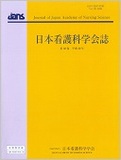Japanese
English
- 販売していません
- Abstract 文献概要
- 参考文献 Reference
要旨
目的:介護保険施設に入所する高齢者を対象に,仮眠時間帯の居場所・姿勢と仮眠時間の実態を把握し,その特徴を明らかにする.
方法:介護保険施設に入所する高齢者20名を対象に3日間,アクティグラフによる睡眠変数の測定と行動観察を用いた居場所・姿勢の調査を行った.その後,協力者を仮眠時間帯に30分未満の仮眠をとった短時間仮眠群,30分以上の仮眠をとった長時間仮眠群の2群に分け,仮眠時間の長短における特徴を分析した.
結果:各仮眠群と仮眠時間帯における滞在数に有意な差があり,短時間仮眠群は長時間仮眠群と比較し仮眠時間帯の居室滞在数が少なく,共同生活室の滞在数が多かった.
結論:入所高齢者は,13時から15時の仮眠時間帯に共同生活室でより多く過ごすことにより,他者との交流時間の増加,施設スケジュールに沿った生活時間の増加があると考えられた.そしてこれらの増加が,入所高齢者の仮眠時間を調節する要因の一つであると示唆された.
Purpose: To ascertain the places, postures, and napping times of elderly persons in a long-term care insurance facility during naps, and to clarify the characteristics thereof.
Method: For 20 elderly persons residing in a long-term care facility, measurements of sleep variables were taken for three days using actigraph, and the places and postures while napping were studied through behavioral observation. Thereafter, the participants were divided into short- and long-time nap groups, whose nap times were shorter than 30 minutes and 30 minutes or longer, respectively. We analyzed the characteristics of short and long nap times.
Results: There were significances between the two groups in terms of the number of time subjects stayed in a particular place during the napping period. Compared with the long-time nap group, participants in the short-time nap group were in their rooms for a fewer number of times during the napping period, and spent a greater number of times in the communal activity room.
Conclusion: For elderly facility residents, spending more time in the communal activity room during the napping period from 1 p.m. to 3 p.m. meant increased opportunity for interacting with others, with increased length of daily life spent in accordance with the facility schedule. It was suggested that these increases are two of the factors affecting nap time of elderly persons in a long-term care insurance facility.
Copyright © 2018, Japan Academy of Nursing Science. All rights reserved.


